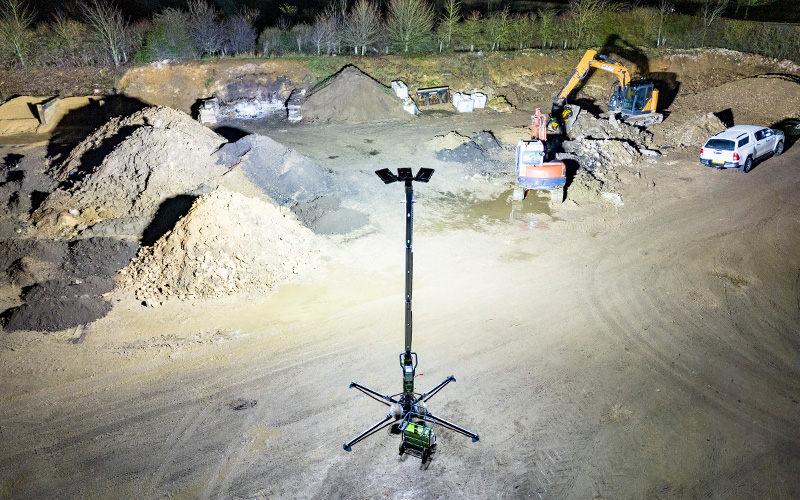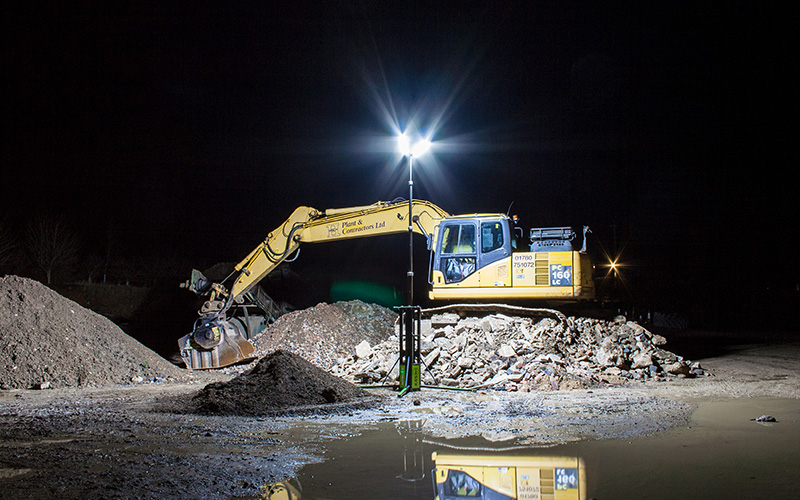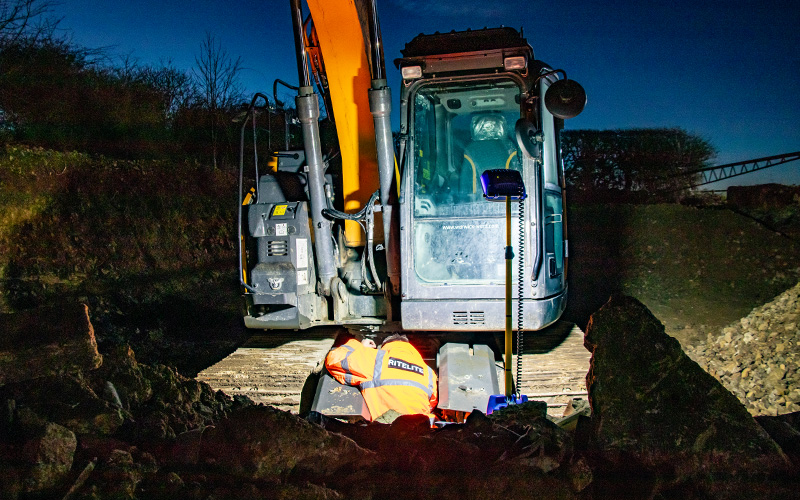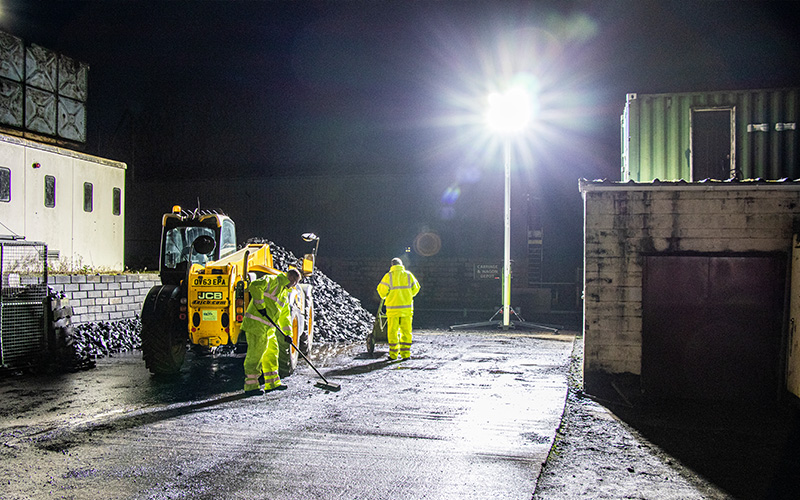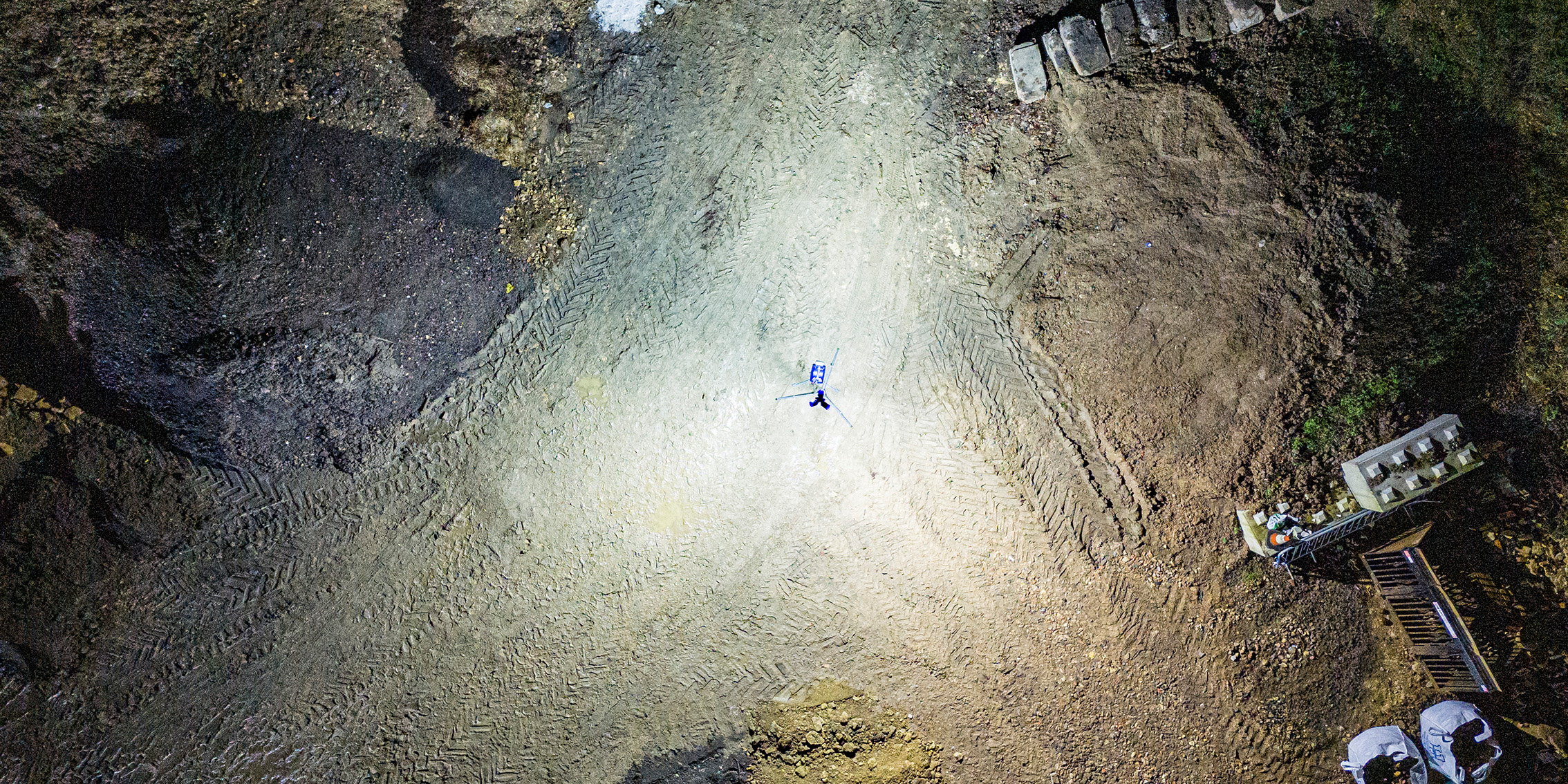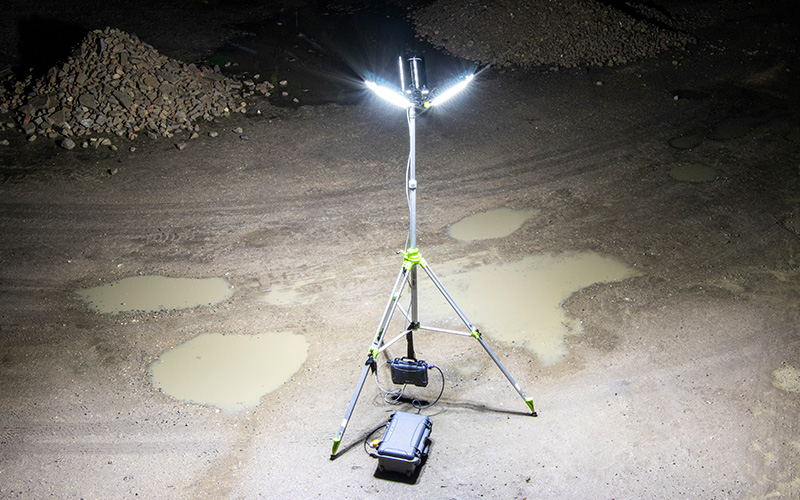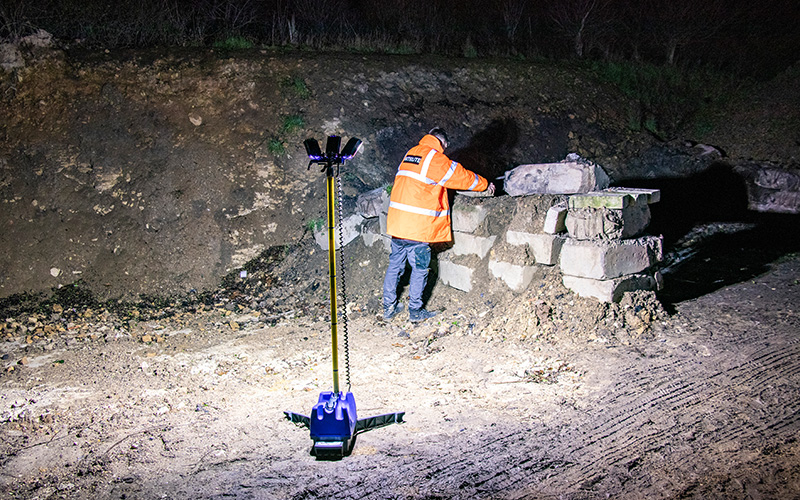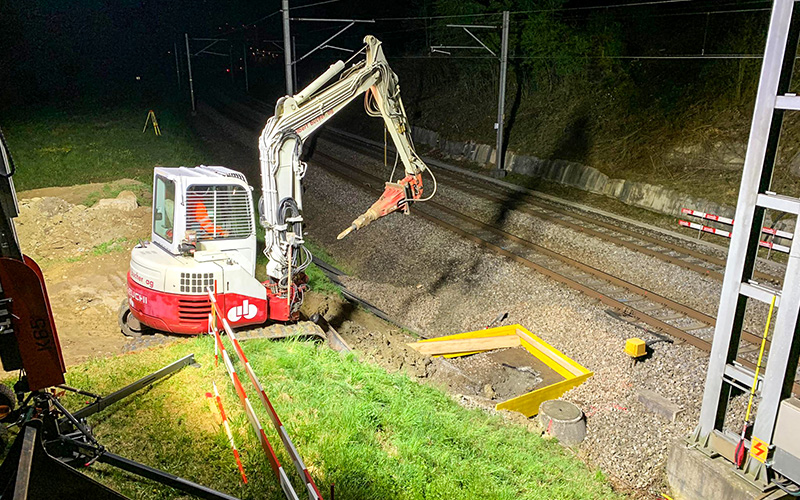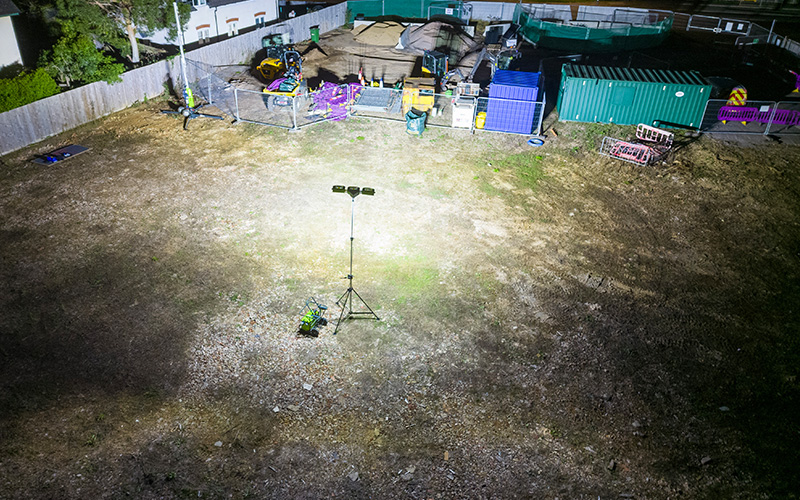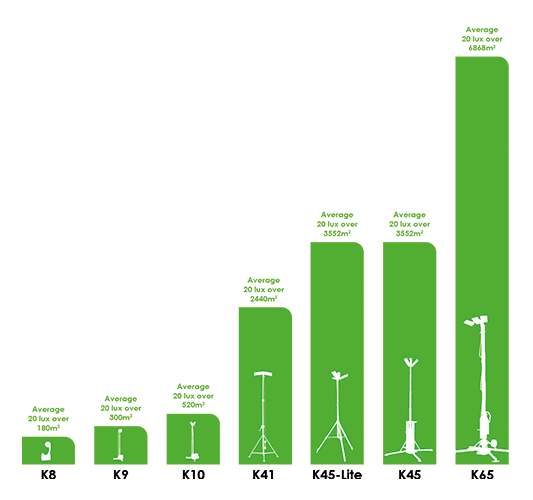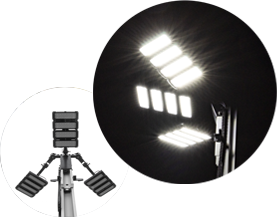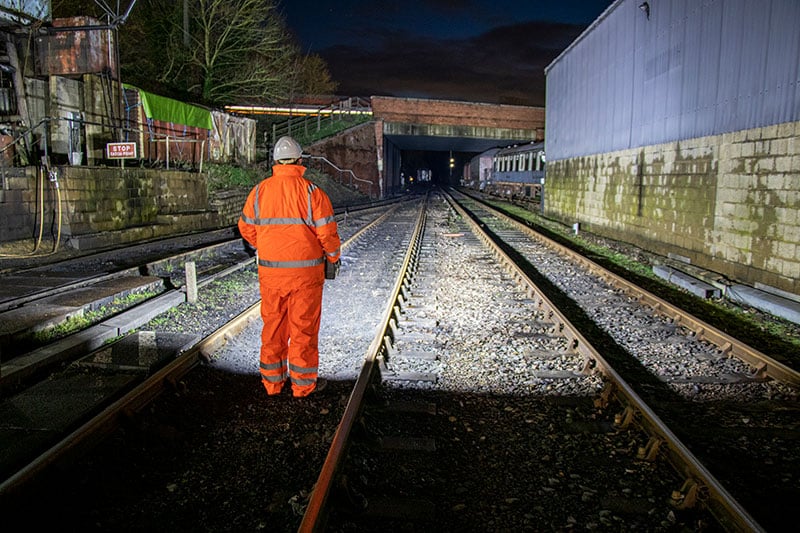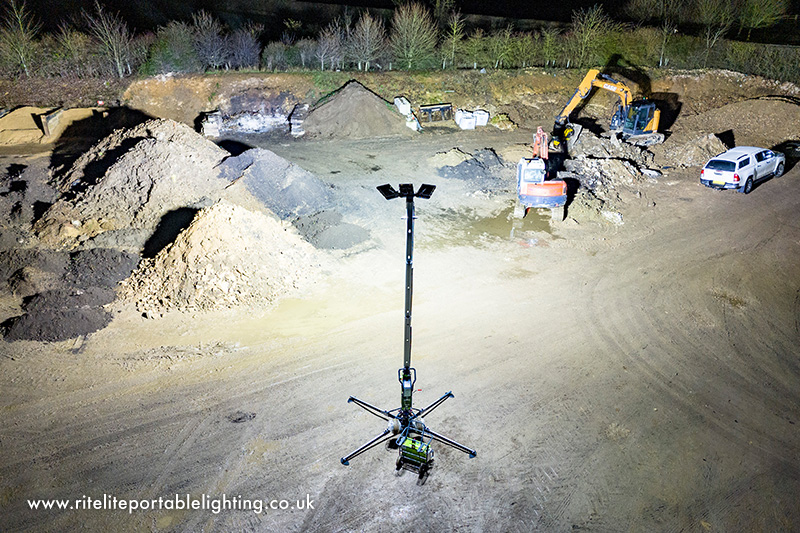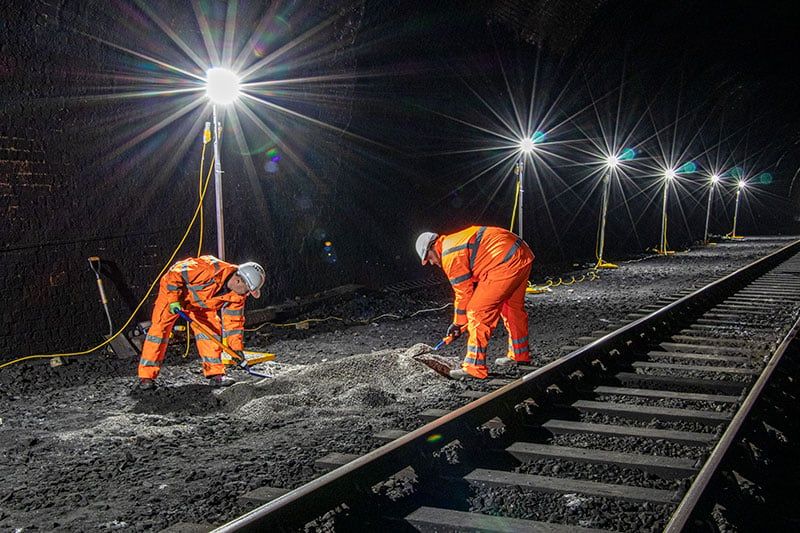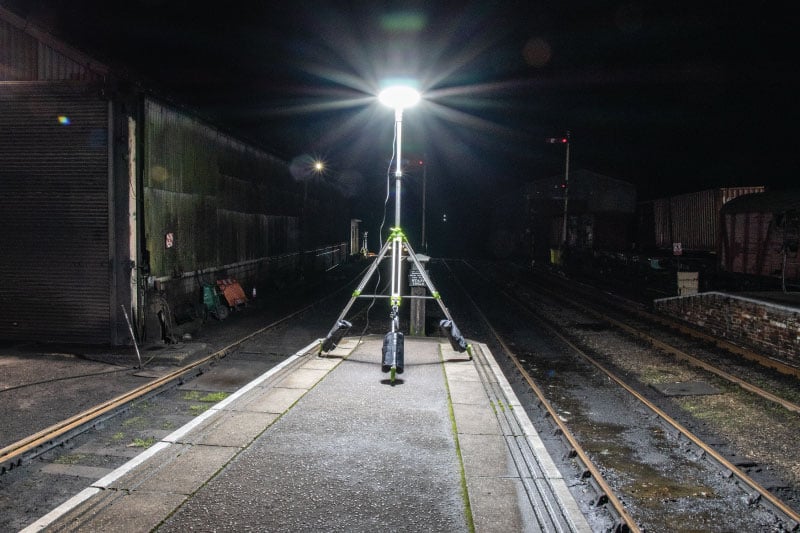The importance of adequate lighting on construction, building and industrial sites
The Heath and Safety Executive states the following regarding Site Lighting
Every part of a construction site that is in use should, as far as possible, be arranged so that natural light is available for people to see to do their work and move about the site safely. Where natural light is inadequate or not available, artificial lighting should be provided.
Why is adequate lighting so important on construction and building sites?
What is adequate construction site lighting?
Different tasks will require different levels of light. The HSE Lighting at work (hse.gov.uk) guidance recommends the following levels
From HSE guidelines View PDF Here
| Activity | Typical locations/types of work | Average illuminance (lux) 1x | Minimum measured illuminance (lux) 1x |
|---|---|---|---|
| Movement of people, machines and vehicles(a) | Lorry park, corridors, circulation routes | 20 | 5 |
| Movement of people, machines and vehicles in hazardous areas; rough work not requiring any perception of detail | Construction site clearance, excavation and soil work, loading bays, bottling and canning plant | 50 | 20 |
| Work requiring limited perception of detail(b) | Kitchens, factories assembling large components, potteries | 100 | 50 |
| Work requiring perception of detail(c) | Offices, sheet metal work, bookbinding | 200 | 100 |
| Work requiring perception of fine detail(d) | Drawing offices, factories assembling electronic components, textile production | 500 | 200 |
(a) Only safety has been considered, because no perception of detail is needed and visual fatigue is unlikely. However, where it is necessary to see detail to recognise a hazard or where error in performing the task could put someone else at risk, for safety purposes as well as to avoid visual fatigue, the figure needs to be increased to that for work requiring the perception of detail. The CIBSE Code for lighting 4 gives more information and recommendations based on scientific knowledge, practical experience, technical feasibility and economic reality.
(b) The purpose is to avoid visual fatigue; the illuminances will be adequate for safety purposes
(c) The purpose is to avoid visual fatigue; the illuminances will be adequate for safety purposes
(d) The purpose is to avoid visual fatigue; the illuminances will be adequate for safety purposes
The CIBSE Code for Lighting goes even further:
| Activity | Minimum maintained mean illuminance (1x) | illuminance uniformity (minimum/average) | Typical applications |
|---|---|---|---|
| Safe pedestrian movement in low risk areas | 5 | 0.25 | Industrial storage areas with only occasional traffic |
| Safe movement of slow vehicles | 10 | 0.4 | Open storage areas served by forklift trucks |
| Safe movement in medium risk areas | 20 | 0.4 | Vehicle storage areas, caontainer terminales with frequent traffic |
| Normal traffic | 20 | 0.4 | Road lighting in container terminals, marshalling yards |
| Very rough work | 20 | 0.25 | Excavation and site clearance |
| Rough work | 50 | 0.25 | Handling timber |
| Safe movement in high risk areas | 50 | 0.4 | Critical area within chemical plants, oil refineries etc |
| Normal work | 100 | 0.5 | Brick laying, carpentry |
| Fine work | 200 | 0.5 | Painting, electrical work |
Table 24.1 Illuminance recommendations for exterior workplaces. Source: The SLL Lighting Handbook, 2018
What must construction and industrial site planners consider when planning site lighting requirements?
When planning lighting for construction or industrial sites it’s essential to ensure that illumination or lux levels (the light on the ground) supports safety, visibility and productivity without introducing new risks or environmental impacts to a site as far as is possible.When planning lighting for construction or industrial sites it’s essential to ensure that illumination or lux levels (the light on the ground) supports safety, visibility and productivity without introducing new risks or environmental impacts to a site as far as is possible.
Lighting should be chosen that will not:
The lighting solution chosen should provide consistent, reliable illumination for the full duration of a shift or work task, without significant drop in brightness when needed.
Lighting solutions chosen should also:
How do Ritelite Lighting products meet the requirements for Site Lighting?
Ritelite lighting systems are UK designed and manufactured to meet the demanding conditions of construction, rail, and industrial sites providing safe, efficient, and adaptable lighting wherever it’s needed for whatever task required.
Every Ritelite product is engineered for durability, with rugged housings, weatherproof enclosures, and impact-resistant components to perform reliably in harsh outdoor and industrial environments. Many models are IP65 or higher rated, ensuring protection against dust and water ingress for year-round use.
All Ritelite lighting products use high-efficiency LED technology, delivering exceptional performance while dramatically reducing energy consumption compared with traditional metal halide, sodium, or fluorescent lamps. LEDs also operate at much lower temperatures, run silently, and offer instant-on performance with no warm-up or cool-down periods required, ensuring maximum uptime.
Ritelite’s beam control and optical design ensure that light is focused precisely where it’s needed with high uniformity, reducing glare, shadowing, and light spill or light pollution. This not only enhances safety and visual comfort on site but also minimises light pollution, supporting compliance with local environmental requirements. Ritelite’s unique automated light output control systems further maximises power efficiencies and energy savings.
All Ritelite products are easy to transport, set up, and reposition, giving site managers the flexibility to adapt lighting as work areas evolve. From compact worklights and tripod-mounted systems to large-area floodlighting towers, there’s a solution for every temporary or semi-permanent application and every budget.
To support sites with limited or no access to mains power, Ritelite offers a full range of battery-powered and hybrid systems, including products compatible with RITE-POWER portable battery generators for silent, fume-free operation. This flexibility enables safe, efficient working even in remote or enclosed environments.
Importantly, every Ritelite lighting system is designed to meet or exceed HSE, CIBSE, and BS EN lighting guidelines, ensuring compliance with illumination standards and promoting safe working conditions across all types of construction and industrial sites.
All Ritelite Construction & Industrial LED lighting solutions are uniquely designed to:
FOCUS LIGHT
All the light produced is focused on the required work surface with bespoke beam controlled lensing ensuring glare and light pollution are minimised.
RUN EFFICIENTLY
Using high quality LED technology Ritelite products maximise efficiency, energy savings and battery durations whilst achieving high performance.
BE VERSATILE
The flexibility and vesatility of Ritelite’s products enable them to be used in multiple locations across a work site both indoor and outdoor. Portable and mobile, compact to store and transport.
SILENTLY RUN
All Ritelite products can be operated silently either with in-built highly efficient lithium batteries or via RITE-POWER portable battery generators.
WORK WHERE NEEDED
Ritelite products are waterproof, dustproof & impact resistant, designed for the harsh working environment of the construction and industrial industries.
BE BUILT TO LAST
Ritelite products are high quality, built to last and continue to perform exceptionally for many years.
Ritelite Product Solutions for Construction Site Lighting

